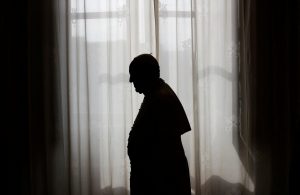The temperature in Round Rock, Texas, neared 100 degrees in June as John Putnam finished mowing his second lawn of the day.
By that point, the 74-year-old landscaper had consumed nearly 3 gallons of water over about five hours in hopes it would fuel his hard day of work. Instead he felt nauseated and fatigued. When he went home to rest, he felt chest pain and had trouble breathing.
He went to the hospital for what he believed was a heart attack, but to his surprise, it was something else: water intoxication.
“I didn’t even know there was such a phenomenon,” Putnam said. “I was really chugging down the water thinking that’s what I needed.”
Drinking water is crucial for preventing dehydration and keeping the body functioning, particularly in the heat of the summer. But consuming too much over a short period can lead to health problems including disorientation, nausea, vomiting and, in severe cases, seizures or death.
Overhydration could be a growing issue, some researchers say, as more people train for endurance competitions like marathons, heat waves become more frequent and reusable water bottles become a staple of everyday life. The message of staying hydrated is so ubiquitous that 40-ounce, stainless-steel tumblers have become status symbols.
“People have this fear that they’re always dehydrated or underhydrated and they need to fix that regularly,” said Colleen Muñoz, director and co-founder of the Hydration Health Center at the University of Hartford. “That’s probably not usually the case.”
Water intoxication isn’t as well-known as dehydration. That can make it difficult to pinpoint the cause of symptoms, which can be similar to those associated with heat exhaustion or heat stroke, said Rayven Nairn, senior dietitian for student health and well-being at Johns Hopkins University.
When someone drinks too much water over a short period, it can lead to the dilution of sodium in the blood, known as hyponatremia or water intoxication. The condition can grow particularly dangerous when it leads to the swelling of brain cells. The expansion puts pressure on certain parts of the brain and can lead to coma, seizures or death, scientists say. Brooke Shields told Glamour last year she suffered a seizure after drinking too much water. A representative for Shields declined to comment.
How Water Intoxication Is Treated
If you think you have water intoxication, it is best to get immediate professional help, doctors say. Here are steps doctors might take to treat it, based on guidance from the Cleveland Clinic.
-Physicians will assess the severity through blood tests and medical history, including medications, existing health problems and physical activity
-In mild cases, doctors may limit a patient’s water consumption
-In severe cases, doctors may replace sodium intravenously
-Doctors may prescribe medications such as tolvaptan or conivaptan to manage low sodium levels
Drinking too much water essentially makes it difficult for the body to keep up healthy levels of sodium, an electrolyte that helps balance the fluid in cells.
A person’s kidneys can typically manage about one liter of water per hour, said Thunder Jalili, a professor of nutrition and integrative physiology at the University of Utah.
“When you drink more than a liter of water an hour, that’s when you run into the risk of potentially diluting your electrolytes,” Jalili said.
Some medical conditions such as poor kidney function—which can make it difficult to regulate sodium—and heart or liver failure can also lead to hyponatremia. Some antidepressants or pain medications could also affect sodium levels, said Dr. Kambiz Kalantari, a nephrologist at the Mayo Clinic.
Though drinking water has many benefits, it is hard to determine any additional gains from drinking more water than necessary, Kalantari said.
In general, doctors recommend you drink to satiate your thirst. The National Academies of Sciences, Engineering and Medicine recommends women and men consume about 11.5 cups and 15.5 cups of fluids a day, respectively, which includes fluid from water, other drinks and food.
Those guidelines apply to healthy, inactive people living in mild climates, according to the organization. Proper hydration varies from person to person. A lifeguard in Miami probably needs to drink more water in a day than a software programmer in Anchorage, Alaska, Jalili said. Drinking about eight 8-ounce glasses of water a day used to be the common recommendation for adults. But the amount of water a person needs each day depends on factors including age, body size, environment and physical activity.
A person’s sense of thirst also changes as they age, making it more difficult to know how much water to drink, Kalantari said. Those who work out a lot should ensure they are replacing the water and salt they lose from sweating with water, electrolytes and salty snacks, said Dr. Mitchell Rosner, a kidney specialist at the University of Virginia School of Medicine.
“If you drink to your thirst, try to keep up with your fluid losses,” Rosner said. But people should be careful of drinking so much that they feel bloated, he added.
Putnam, the Texas landscaper who experienced water intoxication in June, has since changed his hydration routine. Before heading out to work each day, he fills a bottle with water, a quarter teaspoon of salt and an electrolyte drink mix to sip on throughout the day. He also drinks a glass of water after finishing one of several lawn-mowing jobs each day.
“It’s one of the best things that ever happened to me,” Putnam said. “I don’t ever overload my body anymore and I feel so much better.”



